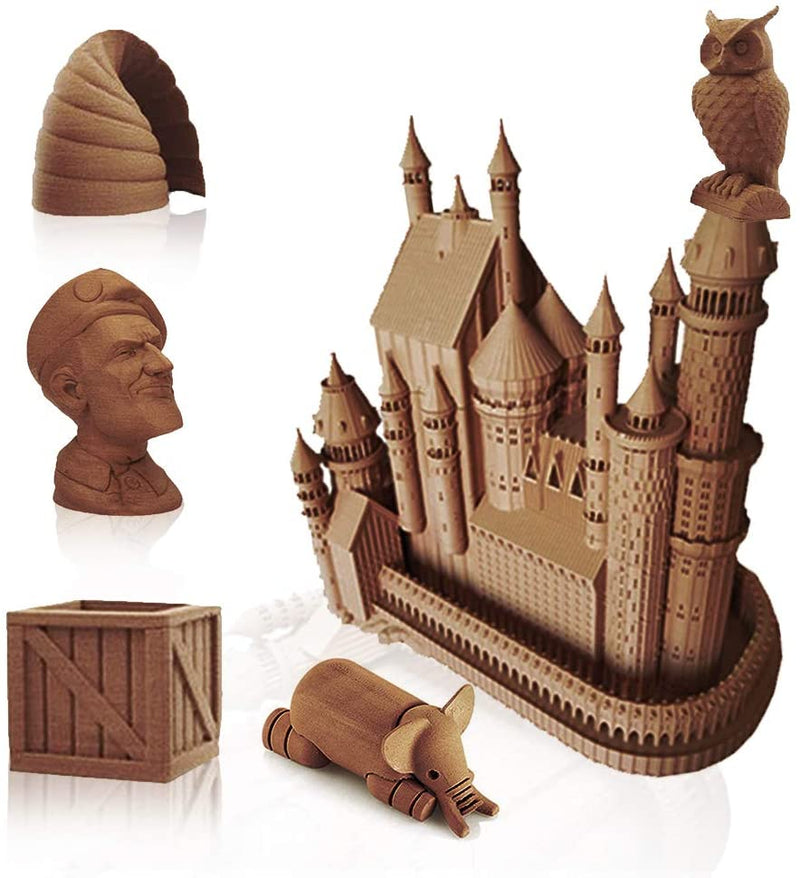Unlock the Secrets to Choosing the Perfect Wood Filament for Your 3D Creations!
In the ever-evolving world of 3D printing, wood filament has emerged as a favorite among both hobbyists and professionals alike. This innovative material combines the versatility of traditional 3D printing filaments with the warm, earthy aesthetic of natural wood, making it an appealing choice for a variety of projects. Whether you're looking to create decorative items, functional prototypes, or unique artistic pieces, wood filament can add a distinctive touch to your creations. In this article, we will guide you through the process of selecting the best wood filament for your needs, exploring its properties, key factors to consider, and practical tips for successful printing.

Understanding Wood Filament
Wood filament is a specialized 3D printing material made from a blend of PLA (polylactic acid) and finely ground wood fibers. This unique composition gives wood filament its characteristic appearance and texture, allowing prints to mimic the look and feel of real wood. The wood fibers can come from various sources, including bamboo, pine, and other types of wood, each contributing to the filament's color and grain pattern. One of the most exciting aspects of wood filament is that it can be easily stained or painted after printing, allowing for further customization. As a result, many 3D printing enthusiasts are drawn to wood filament for its ability to produce visually appealing and tactile prints that stand out from those made with standard plastic filaments.
Factors to Consider When Choosing Wood Filament
When selecting wood filament for your 3D printing projects, there are several important factors to consider to ensure you make the best choice:
- Printability and ease of use: Different brands of wood filament may have varying printability. Look for options that are known for their ease of use, as this can save you time and frustration during the printing process.
- Color and finish options: Wood filaments come in a variety of colors and finishes, allowing for creative expression in your prints. Consider what aesthetic you want to achieve and choose a filament that aligns with your vision.
- Compatibility with different 3D printers: Not all wood filaments are compatible with every 3D printer. Check the specifications of your printer to ensure that it can handle the filament you’re considering.
- Environmental considerations: As sustainability becomes increasingly important, many users prefer eco-friendly materials. Look for wood filaments that are produced sustainably and are biodegradable.
Comparing Wood Filament Options
The market is filled with various types of wood filament, each offering different qualities, textures, and finishes. Some filaments may have a smoother finish, while others may feature a rougher, more natural texture. It's essential to evaluate these differences when making your choice. A friend of mine, an avid 3D printer, once shared how he learned the hard way that not all wood filaments are created equal—he ended up with a batch that was difficult to print and didn’t achieve the desired wood-like finish. To avoid such pitfalls, take the time to read user reviews and look for sample prints from different brands. This can provide valuable insights into the performance and quality of the filament you’re considering.
Tips for Successful 3D Printing with Wood Filament
To achieve optimal results when printing with wood filament, consider the following tips and best practices:
First, pay attention to your printer settings. Wood filaments typically require a slightly higher nozzle temperature compared to standard PLA filaments, usually ranging between 200°C to 220°C. Additionally, adjusting the print speed can impact the final quality; a slower speed often leads to better layer adhesion and detail. The nozzle size is another critical factor; using a larger nozzle can help prevent clogging, which is a common issue with wood filament due to the wood particles. Finally, don’t forget about post-processing! Sanding and staining your printed items can enhance the wood effect, giving your projects a polished and professional look.
Final Thoughts on Selecting Wood Filament
Choosing the right wood filament for your 3D printing projects is crucial for achieving successful and aesthetically pleasing results. By understanding the properties of wood filament, considering essential factors, comparing various options, and applying best practices during printing, you can elevate your 3D creations to new heights. Remember, the world of wood filament is vast and full of possibilities—so don’t hesitate to explore and experiment with different types to find your perfect match. Happy printing!








